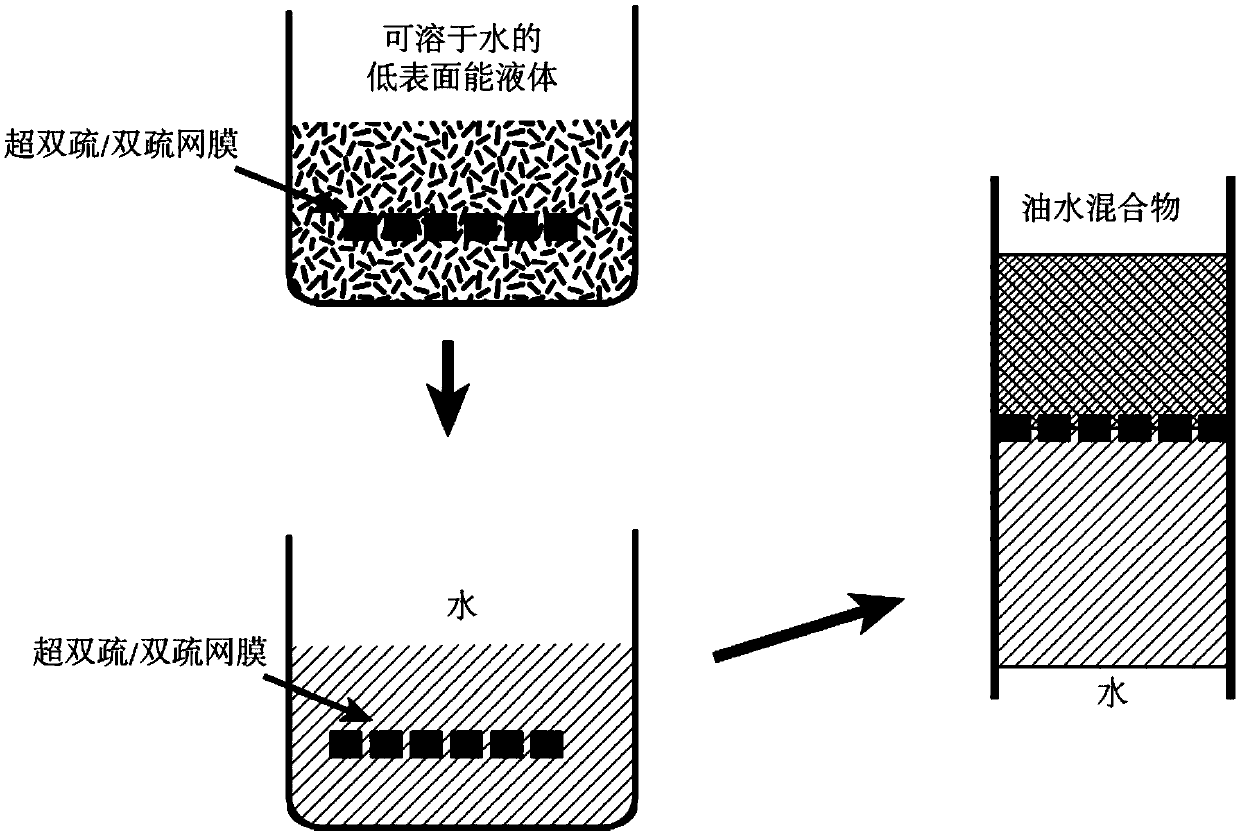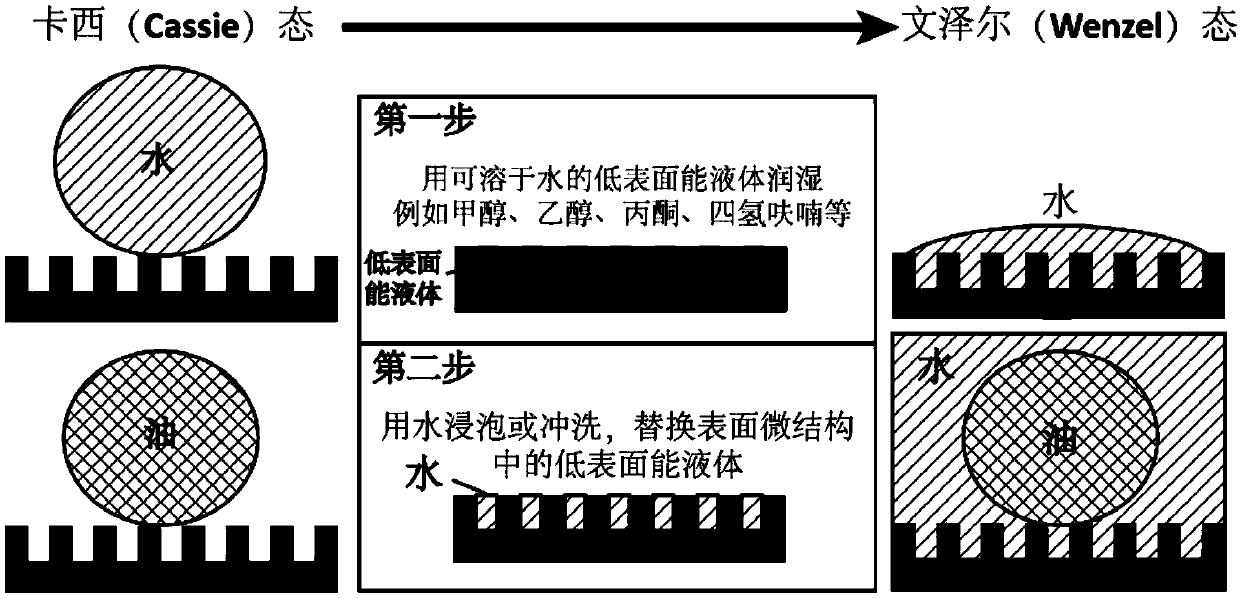Method for achieving water-passing oil-blocking type oil-water separation by using super-double-hydrophobic or double-hydrophobic net membrane
A technology for oil-water separation and dredging membrane, which is applied in separation methods, liquid separation, chemical instruments and methods, etc., can solve the problems of difficult preparation, difficulty in realizing oil-water separation through oil-blocking and water-passing, and blocking mesh holes by filtration. Achieve the effect of low cost and energy consumption, greatly reduced overcoming efficiency and improved separation efficiency
- Summary
- Abstract
- Description
- Claims
- Application Information
AI Technical Summary
Problems solved by technology
Method used
Image
Examples
specific Embodiment approach 1
[0021] Specific implementation mode 1: The specific process of the method for realizing oil-blocking and water-flowing oil-water separation using super-amphiphobic or amphiphobic omentum in this embodiment is as follows:
[0022] Step 1: making a water-soluble liquid with low surface energy wet a part or the whole of the superamphiphobic or amphiphobic omentum by means of spraying or soaking;
[0023] Super-amphiphobic means that the contact angles of oil and water with solid surfaces are greater than 155 degrees;
[0024] Amphiphobic means that the contact angles of oil and water with solid surfaces are both greater than 90 degrees and less than or equal to 155 degrees;
[0025] The specific amount of low surface energy is actually related to the oleophobicity of the super-amphiphobic or amphobic surface, which is low enough to wet the super-amphiphobic or amphobic surface. For example, it is generally used that the surface energy at room temperature is less than 0.03N / m as ...
specific Embodiment approach 2
[0030] Embodiment 2: This embodiment differs from Embodiment 1 in that the water-soluble liquid with low surface energy in step 1 is ethanol, methanol, acetone, tetrahydrofuran, or an aqueous solution containing a surfactant.
[0031] Other steps and parameters are the same as those in Embodiment 1.
specific Embodiment approach 3
[0032] Embodiment 3: The difference between this embodiment and Embodiment 1 or 2 is that in the step 1, the super-amphiphobic omentum behaves as super-hydrophobic and super-oleophobic in the air, so that neither oil nor water can pass through the network. membrane.
[0033] Other steps and parameters are the same as those in Embodiment 1 or Embodiment 2.
PUM
 Login to View More
Login to View More Abstract
Description
Claims
Application Information
 Login to View More
Login to View More - R&D
- Intellectual Property
- Life Sciences
- Materials
- Tech Scout
- Unparalleled Data Quality
- Higher Quality Content
- 60% Fewer Hallucinations
Browse by: Latest US Patents, China's latest patents, Technical Efficacy Thesaurus, Application Domain, Technology Topic, Popular Technical Reports.
© 2025 PatSnap. All rights reserved.Legal|Privacy policy|Modern Slavery Act Transparency Statement|Sitemap|About US| Contact US: help@patsnap.com


